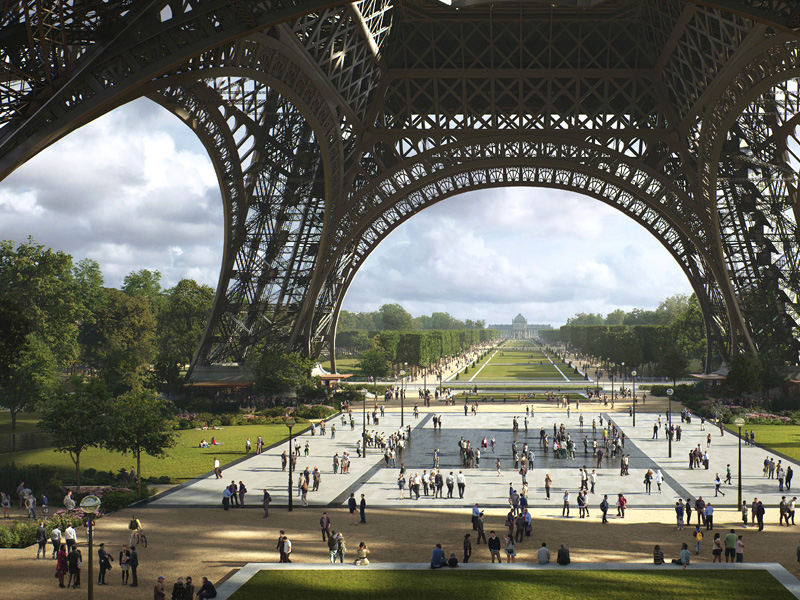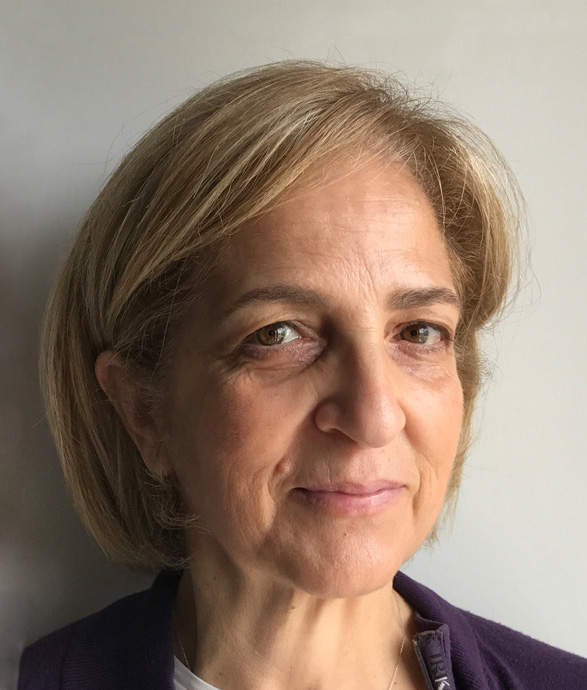La Ville Lumière
green city and increasingly at the service of the citizen

The Ville lumière, a green city increasingly at the service of the citizen
Paris "City 15" that focuses on man, his well-being and the well-being of the earth.
Paris is increasingly transforming itself into a green city. Already the Plan of the prefect Haussmann and his successor Jean-Charles Alphand, wanted in the second half of the nineteenth century by Napoleon III, had given breath to the city with woods and parks, such as the bois de Boulogne and the bois de Vincennes, the parks of the Buttles-Chaumont, parc Monceau, parc Montsouris. There was no lack of greenery in every neighborhood with small gardens (squares) and tree-lined streets.
The advance of modernity, however, in more than a century, has made the city polluted and less livable and the mayor Anne Hildago aims for a city with a greater presence of urban green, smart, increasingly at the service of the citizen. The new Paris we imagine is, therefore, the city that becomes more welcoming, that reduces inequalities, that responds to new social needs.
At the center of Anne Hildago's policy is the environmental issue and the re-appropriation of public spaces and already during her first term Paris had been transformed into a city on a human scale, with a different and sustainable mobility, favoring walking routes or by bicycle.
Anne Hildago also promised that Paris will increasingly be a city attentive to environmental values, becoming a "City 15", that is, a city in which in a radius of fifteen minutes, moving on foot or by bicycle, you can find everything that is necessary to live, from commercial activities, to school, to health services, to spaces for relaxation and leisure.
Per combattere contro i cambiamenti climatici la città di Parigi avrà delle vere e proprie foreste urbane in quattro siti storici della città, lungo le sponde della Senna, a Place de l’Hôtel de Ville, al Palais Garnier, alla Gare de Lyon (una delle principali stazioni ferroviarie).
Il piano della sindaca sarà realizzato con varie essenze che alternano giardini erbosi con alberi che avranno dimensioni e caratteristiche tali da poter rendere sempre visibili i monumenti. Le aree verdi mitigheranno il clima torrido estivo, renderanno possibile avere isole di fresco, con la vegetazione si avrà una maggiore ossigenazione dell’aria e, dunque, una maggiore vivibilità. Accanto alle aree piantumate si incentivano i tetti verdi mentre la piazza di fronte al municipio potrebbe diventare una pineta e l’area posteriore del Palais Garnier, sede del grandioso Teatro dell'Opera di Parigi, risalente al diciannovesimo secolo, un’area alberata con ciliegi.
A garden will take the place of the square beside the Gare de Lyon and one of the car lanes along the Seine will be enriched with grass and shrubs. A large green area will be created around the Eiffel Tower, gardens and greenery will convert school courtyards and public spaces, in a path in which the Pont d'Iéna will be transformed into a completely green and cycle path, with lawns and trees. Many squares become spaces with theaters, places for exhibitions and various services, water games. A two-kilometer long pedestrian and bicycle area will start from the Eiffel Tower, which will be completed for the 2024 Olympics.
The project is entrusted to the American Kathryn Gustafson, a landscape architect who with her studio Gustafson Porter + Bowman intends to transform the place with a large garden rich in biodiversity.
Green areas will not only have beneficial effects for oxygenation, but will be able to transmit positive emotions to the inhabitants and, with their surfaces, will absorb water, harmful gas emissions and also disturbing sounds, contributing to the improvement of life.
The goal is ambitious and aims to achieve zero carbon emissions by 2050 and 50% of the surface covered by vegetation.
The Ville Lumière once again illuminates and guides a great transformation that, it is hoped, can be followed not only by large cities (as is already happening for Milan, Madrid, Frankfurt), but also by the many small and medium-sized Italian cities.
































































